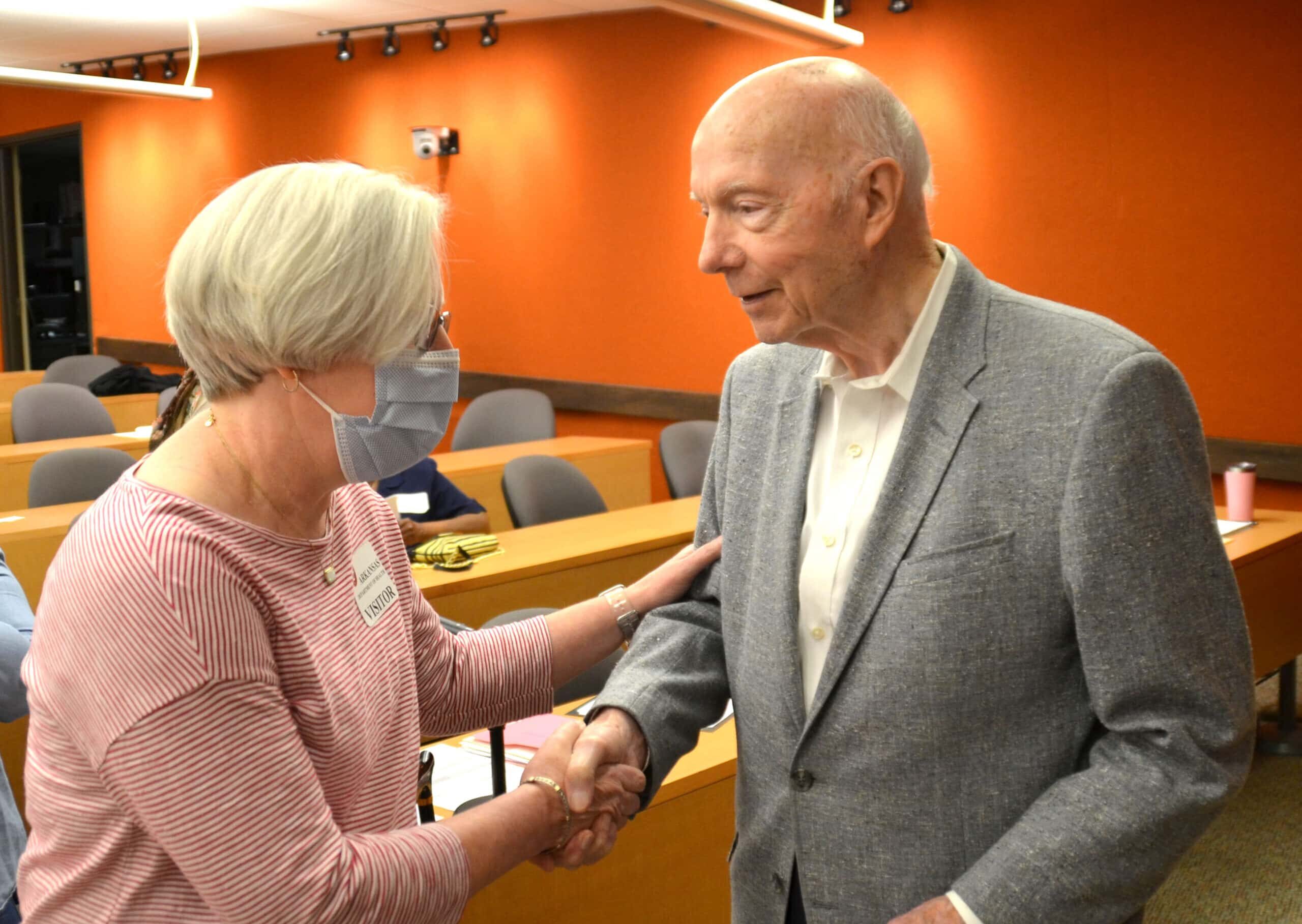Bates Co-Authors a Book Detailing History of Tuberculosis in Arkansas
| Joseph Bates, M.D., M.S., associate dean for public health practice for the University of Arkansas for Medical Sciences Fay W. Boozman College of Public Health, has co-authored a book chronicling the history of tuberculosis in Arkansas.
Bates and Larry Floyd wrote “Stalking the Great Killer: Arkansas’s Long War on Tuberculosis.” The book is the culmination of Bates’ goal to fully detail the situation.
“I have a personal, true, in-depth experience with tuberculosis,” Bates said. “If I don’t tell this story — it may get lost.
“Therefore, the book provides information from a historical viewpoint. What happened? Why? What was finally done to address the tuberculosis epidemic in Arkansas?”
Among the major points of emphasis in the book is the creation, popularity and eventual elimination of tuberculosis sanatoriums. At one time there were more than 600 sanatoriums nationally. Individuals admitted to a sanatorium would receive specialized, long-term care. During the sanatorium boom, the belief was that air at higher elevations would help people who had tuberculosis.
Arkansas’s sanatorium, built in 1910, was near Booneville and had 1,000 patient beds. It was the nation’s largest sanatorium and remained open until 1972.
“Personally, I first became interested in the effects of tuberculosis when I was 15,” Bates said. “That’s when I had to take an uncle to get treatment at the sanatorium.”
“Research later showed that half of the patients at the sanatoriums passed away,” Bates said. “Those who didn’t die became stabilized into what we called arrested tuberculosis.”
The book discusses streptomycin being the first antibiotic effective for treating TB, and Bates using it and other drugs to help launch a successful tuberculosis healing program. The initiative started in Pine Bluff at Jefferson Hospital, which is now Jefferson Regional Medical Center. Due to its success in the state’s Delta region, the treatment program was later implemented at other selected facilities in Arkansas.
“At that time, it was revolutionary to treat tuberculosis and send people home on treatment in a few weeks,” he said. “We selected various hospitals in Arkansas where we treated newly diagnosed TB patients and released them.”
Bates chuckled when discussing how the medical establishment initially shunned the method.
“The treatment eventually became popular nationally. Within a few years, all the sanatoria nationwide discontinued service,” he said. “We basically set a standard for treating tuberculosis in hospitals. That’s what the book is about and the history of closing the sanitoriums, including ones outside of the U.S.”
The book received a favorable review from The Lancet, an internationally renowned medical journal.
“The Lancet only publishes the best work of international medical science,” he said. “I’m happy about the great review the book received from them. Tuberculosis in the U.S., except for a few places, is now controlled. That’s the history the book focuses on, and how the U.S. eventually reached that point.”
